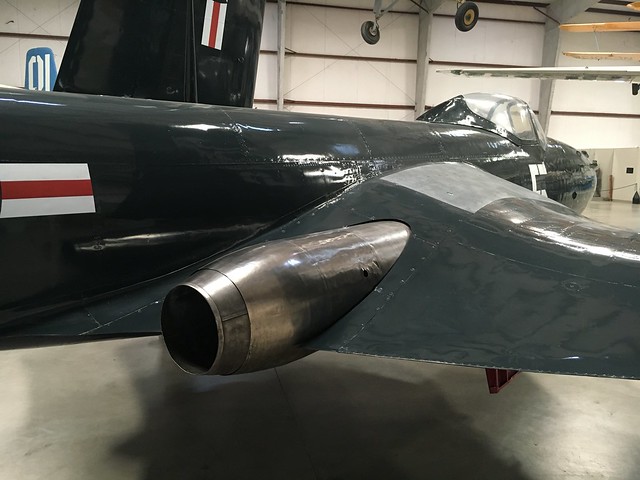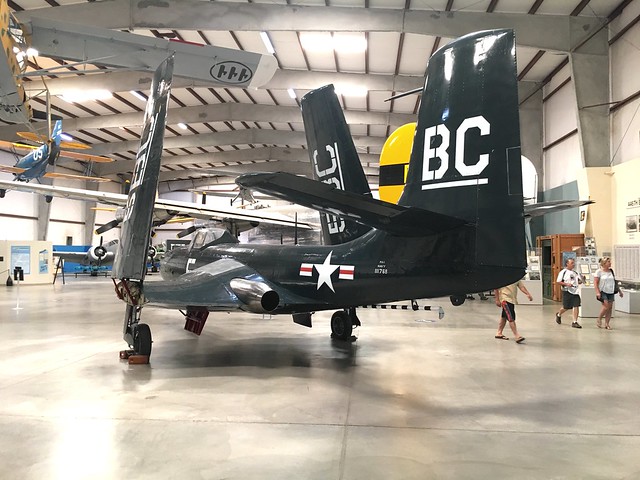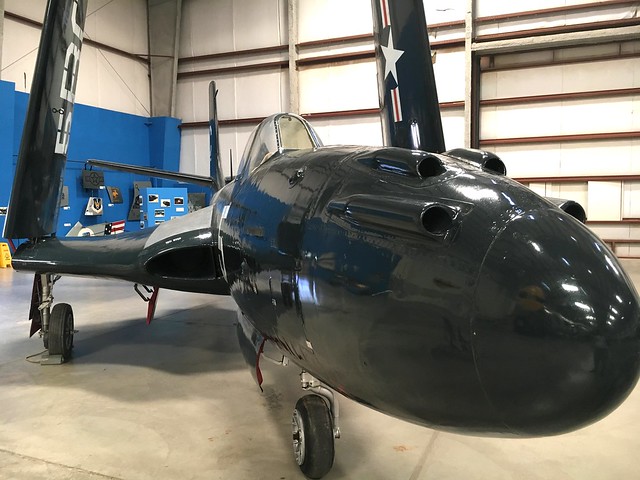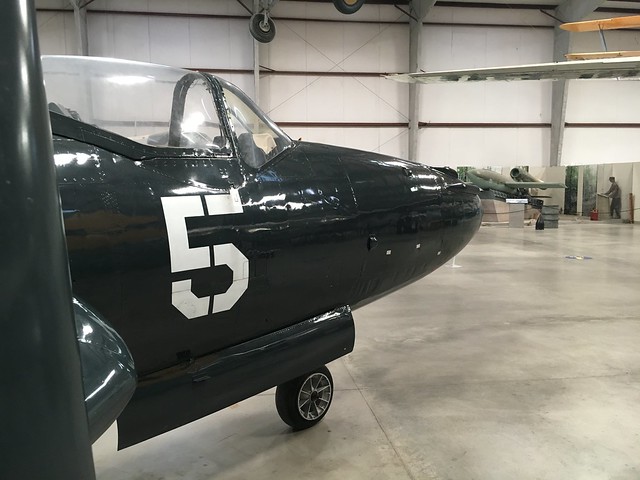There were three tram tours on Monday’s schedule at the Pima Air & Space Museum, and three drivers. I drove and narrated the first tour, then helped collect tickets for the second. I told the other drivers I wanted to take photos of our newest exhibit, a very rare McDonnell FH-1 Phantom. They said fine, so after the visitors were on the tram and the second driver had started his narration, I headed over to the hangar where the Phantom was parked. On the way I stopped to watch a crew from restoration getting ready to tow the F-105G Wild Weasel to the paint shop.
The Navy ordered development of what was to become its first carrier-based jet fighter in mid-1943. In the very early days of jet power, engine availability was a significant problem. By the time the first Phantom prototype was ready to fly in January 1945, Westinghouse had turned over just one engine. The Phantom was designed to be powered by two jet engines, of course, but McDonnell conducted ground and taxi tests with the one engine they had, and later that month, still missing its second engine, actually flew prototype #1 for the first time. That must have been an amazingly ballsy decision, given that the loaded weight of the Phantom was 10,000 pounds and the single test engine produced just over 1,100 pounds of thrust.
Later, of course, the second engine was delivered and installed, and in total two prototypes were used in the flight test program. The second prototype, in July 1946, became the first aircraft powered by jet engines alone to take off from and land on an American aircraft carrier.
Very early in the flight test program (March 1945, only two months after prototype #1’s first flight) the Navy ordered 100 Phantoms. When the war ended later that year, the Navy cut the contract to 30, but later upped it to 60. In total, 62 Phantoms were built (the two prototypes and 60 production aircraft). The Phantom entered service with the Navy in August 1947; the Marines began flying the jet in November of the same year. Production Phantoms were powered by Westinghouse J30s producing 1,600 pounds of thrust each.
When you get a close look at the Phantom, you quickly realize how primitive it is. There’s no ejection seat, no radar. Even with the better production engines it must have been grossly underpowered. It was armed with four .50-caliber machine guns mounted high on the nose, directly in the pilot’s line of vision; it could also carry eight high velocity rockets under the wings. And that’s it. The Phantom had a cruise speed of 216 knots and a top speed of 417, about the same as the Grumman F8F Bearcat, a piston-engine fighter. Lockheed’s P-80 Shooting Star, which had been flying with the Air Force since 1945, cruised at over 350 knots and could reach a top speed of 521 knots. The Phantom simply couldn’t do much, and better carrier jets like the McDonnell F2H Banshee and Grumman F9F Panther were under development. The Phantoms went into the Naval Reserve in 1949 and were primarily used for training until the last ones were retired in 1954. No Phantoms ever saw combat. Today only three Phantoms remain, all in museums.
Besides being the Navy’s first carrier-based jet fighter, the Phantom was the McDonnell Aircraft Corporation’s first jet. Mr. Mac went on to design and build many fine jets for the Navy and the Air Force, all with spooky names (after the original Phantom there were the Banshee, Voodoo, Goblin, Demon, and Phantom II). And then Mr. Mac designed the jet I flew, the F-15, and it was named the Eagle. I’ve always wondered who decided to abandon the cool names, McDonnell-Douglas or the USAF, and whether, at least at the factory in St Louis, the Eagle didn’t have a pre-production name in the same demonic spirit as its predecessors … alas, I can find no information on this subject.
Walking back from my visit with the Phantom, I discovered that one minute after I left my co-drivers, the tram had broken down and the third driver had to run fetch a backup vehicle. Had I been there, as the junior member of the team, that would have been my job. Should I feel guilty? Probably. Do I? Not really.
I’ll leave you with one additional observation. I take no position; just throwing this out there:
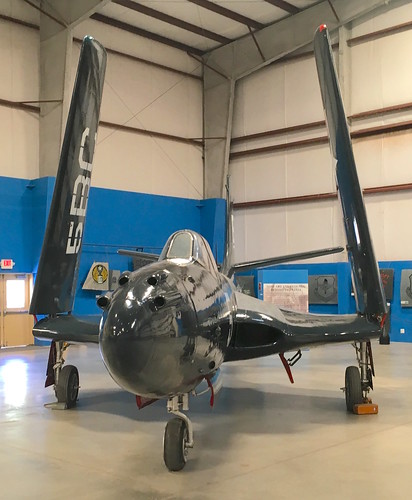 |
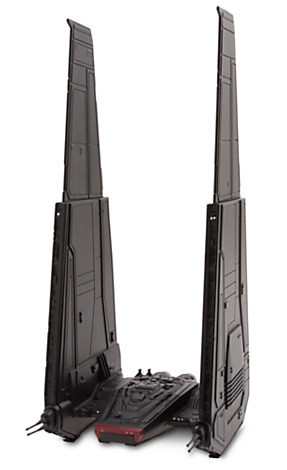 |
Links:

